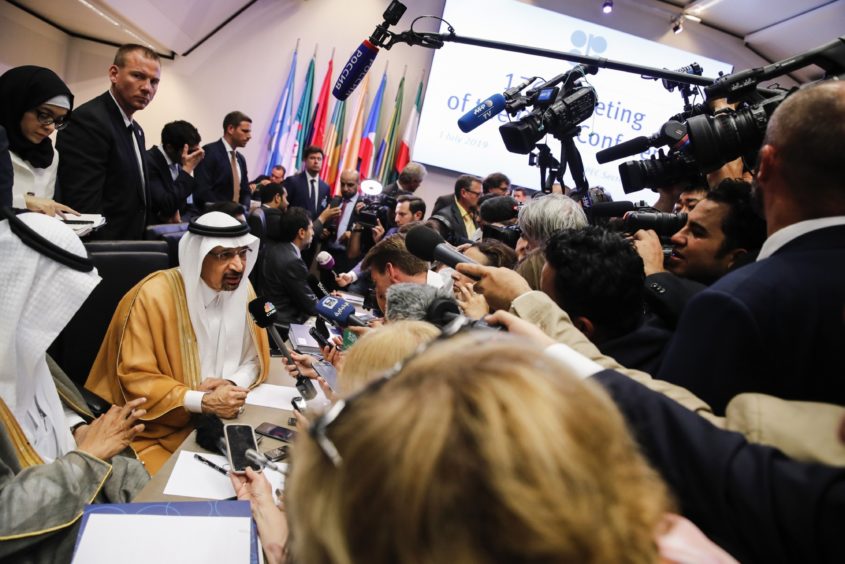
Saudi Arabia and investors have long been at odds about the value of the kingdom’s crown jewel. After a four-year journey that’s been marked with delays, disagreements over valuation and devastating attacks on Aramco’s oil facilities, the kingdom’s de-facto ruler hit his target on Monday: a $2 trillion company.
Here’s how the world’s biggest IPO unfolded:
2016
- Jan. 7: Then-Deputy Crown Prince Mohammed bin Salman tells the Economist he’s considering an initial public offering of state-oil monopoly Saudi Arabian Oil Co. The next day, the world’s biggest crude producer confirms it’s studying a potential share sale.
- April: The prince says the IPO will involve selling a stake of up to 5% in Aramco’s parent company and that the share sale will happen by the end of 2018. He says the company could be worth more than $2.5 trillion.
- May: Saudi Aramco chairman Khalid Al-Falih is made oil minister, replacing Ali Al-Naimi, who’s held the job since 1995.
2017
- February: Oil-industry estimates show Aramco may be worth a lot less than Mohammed bin Salman’s $2 trillion estimate.
- November: Prominent Saudis, including Prince Alwaleed bin Talal, are arrested in what’s billed as an anti-corruption drive. Many are held in Riyadh’s Ritz-Carlton.
2018
- January: Saudi Arabia says it has agreed settlements of more than $100 billion with those held.
- April: Bloomberg reports details of Aramco’s financial accounts for the first time, showing it’s the world’s most profitable company with almost no debt and rock-bottom production costs.
- July: Aramco says it will buy a controlling stake in the kingdom’s chemical giant Saudi Basic Industries Co. from the sovereign wealth fund for $70 billion, meaning another potential delay.
- October: Jamal Khashoggi, a critic of the Saudi regime and Washington Post columnist, is murdered in the kingdom’s consulate in Istanbul.
- In an interview with Bloomberg that month, the prince says the IPO will happen before 2021 and sticks to his $2 trillion valuation.
- Nov. 3: Aramco announces intention to float on Riyadh’s stock exchange. Banks release their research on Aramco, but their views on the company’s valuation range from as little as $1.1 trillion to as much as $2.5 trillion.
- Nov. 17: At a late night meeting in Riyadh, Aramco’s leadership decides to scale back the IPO to what’s essentially a local offering. After terrible feedback from international money managers, the sale won’t be marketed outside the Middle East. Just 1.5% of the company will be sold at a valuation of up to $1.7 trillion.
2019
- July: Aramco restarts work on the IPO and sounds banks out.
- Sept. 3: Energy Minister Khalid Al-Falih, long seen as an opponent of the IPO, is removed as Aramco chairman and replaced by Yasir Al-Rummayan, head of the kingdom’s sovereign wealth fund and a key lieutenant of the crown prince.
- Sept. 14: Aeriel attacks on Aramco’s largest oil-processing plant at Abqaiq knock out about half of Saudi Arabia’s oil production.
- Oct. 17: Just three days before a planned intention to float announcement, Aramco postpones, saying it needs more time to prepare third-quarter results.
- Dec. 5: Aramco raises $25.6 billion from world’s biggest IPO, valuing the firm at $1.7 trillion.
- Dec 11: The company lists on the Saudi stock exchange. Shares climb by the daily limit of 10% on debut valuing the company at a record $1.88 trillion.
- Dec. 17: After four days of trading, shares close at 38 riyals ($10.13), giving the company a market value of $2.03 trillion.